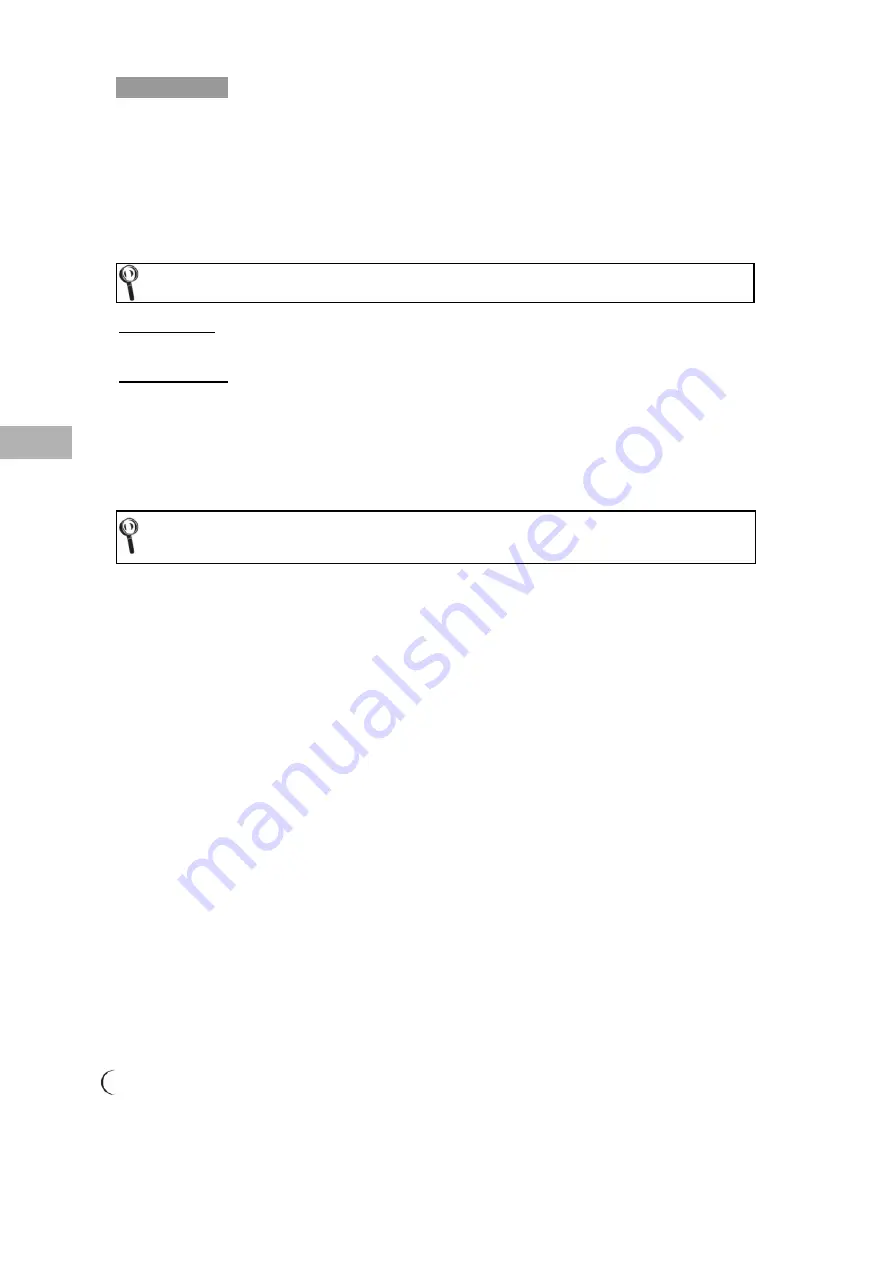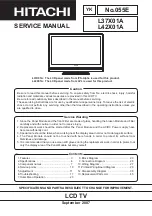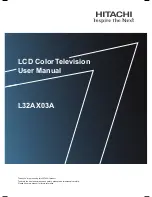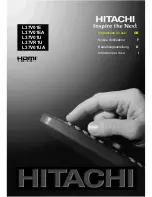
04.............................................................................................................................................
Cautions
[Maintenance]
If any of following occurs, unplug the LCD TV and contact your distributor or qualified technician to
repair the LCD TV:
1. The power cord or plug is damaged.
2. Liquid enters the LCD TV.
3. LCD TV is damp or wet.
4. LCD TV is damaged.
5. LCD TV malfunctions.
DO NOT attempt to repair the LCD TV by yourself. There are high voltages inside the cabinet
which poses a risk of electric shock.
Changing parts
If the LCD TV requires new parts, ask the technician for written proof the new parts are specified by
the manufacturer and function are the same as the original parts.
Safety inspection
After the LCD TV is repaired, be sure to ask the technician (in accordance with the manufacturer's
requirements) to conduct a routine safety inspection to make sure the LCD TV is safe.
If the LCD TV has been used longer than its life, please contact qualified technician for repair.
[User's record]
You can find the serial number and model on the back of the LCD TV. Be sure to provide the model
and serial number when you contact your distributor.
Please read and comply with all warnings, cautions, and instructions in the manual thoroughly.
Failing to do so may void your warranty. Modifying the LCD TV in such a manner not approved
by this manual will also void your warranty.
FCC Compliance Statement
This device complies with Part 15 of the FCC Rules. Operation is subject to the following two
conditions:
(1) this device may not cause harmful interference, and (2) this device must accept any interference
received, including interference that may cause undesired operation.
Note:
This equipment has been tested and found to comply with the limits for a Class B digital device,
pursuant to part 15 of the FCC Rules. These limits are designed to provide reasonable protection
against harmful interference in a residential installation. This equipment generates uses and can
radiate radio frequency energy and, if not installed and used in accordance with the instructions, may
cause harmful interference to radio communications. However, there is no guarantee that interference
will not occur in a particular installation. If this equipment does cause harmful interference to radio or
television reception, which can be determined by turning the equipment off and on, the user is
encouraged to try to correct the interference by one or more of the following measures:
* Reorient or relocate the receiving antenna
* Increase the separation between the equipment and receiver
* Connect the equipment into an outlet on a circuit different from that to which the receiver is
connected
Caution:
To comply with the limits for an FCC Class B computing device, always use the signal cord
and power cord supplied with this unit. The Federal Communications Commission warns that changes
or modifications to the unit not expressly approved by the party responsible for compliance could void
the user's authority to operate the equipment.
European Notice
Products with the CE Marking comply with both the EMC Directive (89/336/EEC), (93/68/EEC) and
the Low Voltage Directive (73/23/EEC) issued by the Commission of the European Community.





































